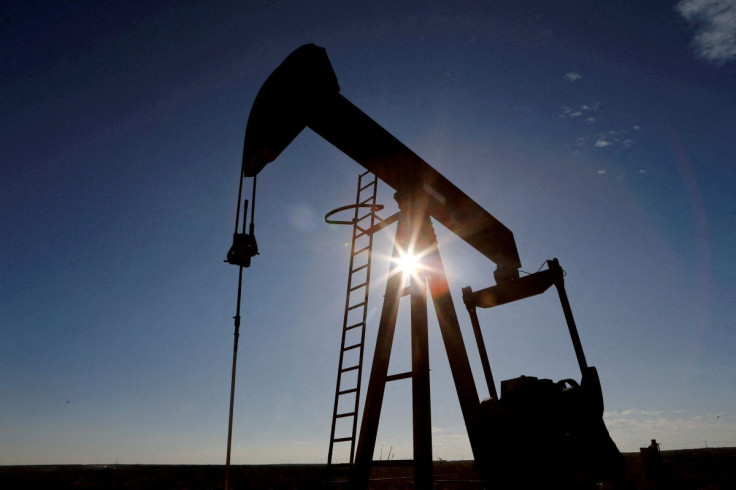Oil Hits 7-yr Highs, Fueled By Russia's Troop Buildup Near Ukraine

Oil prices rose on Monday to their highest in more than seven years as fears grew that Russia could attack Ukraine in the near future.
Brent crude rose 55 cents to $94.99 a barrel by 1:18 p.m. EST (1817 GMT), after touching its highest since October 2014 at $96.16.
U.S. West Texas Intermediate (WTI) crude rose 85 cents to $93.95 a barrel, after hitting $94.94, the loftiest since September 2014.
Comments from the United States about an imminent attack by Russia on Ukraine have rattled global financial markets. [MKTS/GLOB]
Russia could invade Ukraine at any time and might create a surprise pretext for an attack, the United States said on Sunday. The nation has amassed thousands of troops near Ukraine's borders, but Moscow denies it plans to invade and has accused the West of hysteria.
The oil market cooled briefly after Ukrainian Ambassador Vadym Prystaiko said Ukraine was prepared to make some concessions to Russia. However, prices resumed their upward momentum soon after.
"Despite the fact that we've had talks of more negotiations, the market is not quite convinced that conflict between Russia and Ukraine is off the table," said Phil Flynn, analyst at Price Futures Group.
Russia is one of the largest crude oil producers, with a capacity of about 11.2 million barrels per day, said Nishant Bhushan, senior oil market analyst for Rystad Energy.
"Any disruption of oil flows from the region would send Brent and WTI prices skyrocketing higher far above $100, in a market struggling to supply the increased demand for crude as economies recover from the pandemic," Bhushan said.
Supplies have been stretched as the Organization of the Petroleum Exporting Countries (OPEC) and its allies, a group known as OPEC+, have struggled to deliver monthly pledges to increase output by 400,000 barrels per day (bpd) until March.
International Energy Agency (IEA) chief Fatih Birol urged OPEC+ to close the gap between words and its actions.
The IEA has said the gap has widened between the OPEC+ target and actual output.
Investors are also watching talks between the United States and Iran. The Iranian foreign minister said Iran was "in a hurry" to reach a swift agreement in nuclear talks in Vienna, provided its national interests are protected.
"A nuclear deal between the United States and Iran could release 1.3 million barrels of supply, but this will not be sufficient to ease the supply constraints," said Pratibha Thaker, the Economist Intelligence Unit's editorial director for the Middle East and Africa.
© Copyright Thomson Reuters {{Year}}. All rights reserved.




















